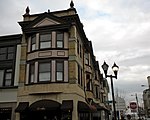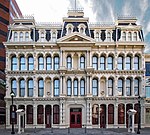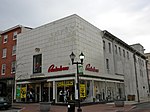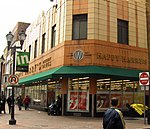Charles Gray Printing Shop
1874 establishments in DelawareBuildings and structures in Wilmington, DelawareCommercial buildings completed in 1874Commercial buildings on the National Register of Historic Places in DelawareDelaware Registered Historic Place stubs ... and 2 more
Italianate architecture in DelawareNational Register of Historic Places in Wilmington, Delaware

Charles Gray Printing Shop was a historic commercial building located at Wilmington, New Castle County, Delaware. It was built in 1874, and was a three-story, commercial/office building with a rectangular plan built of wall bearing brick construction. It featured a half-octagonal display window and is in the Italianate style. The building was demolished and replaced with an office of the University of Delaware. It was added to the National Register of Historic Places in 1985.
Excerpt from the Wikipedia article Charles Gray Printing Shop (License: CC BY-SA 3.0, Authors, Images).Charles Gray Printing Shop
East 8th Street, Wilmington
Geographical coordinates (GPS) Address Nearby Places Show on map
Geographical coordinates (GPS)
| Latitude | Longitude |
|---|---|
| N 39.743252 ° | E -75.548498 ° |
Address
Commercial Trust Building
East 8th Street 13
19801 Wilmington
Delaware, United States
Open on Google Maps










